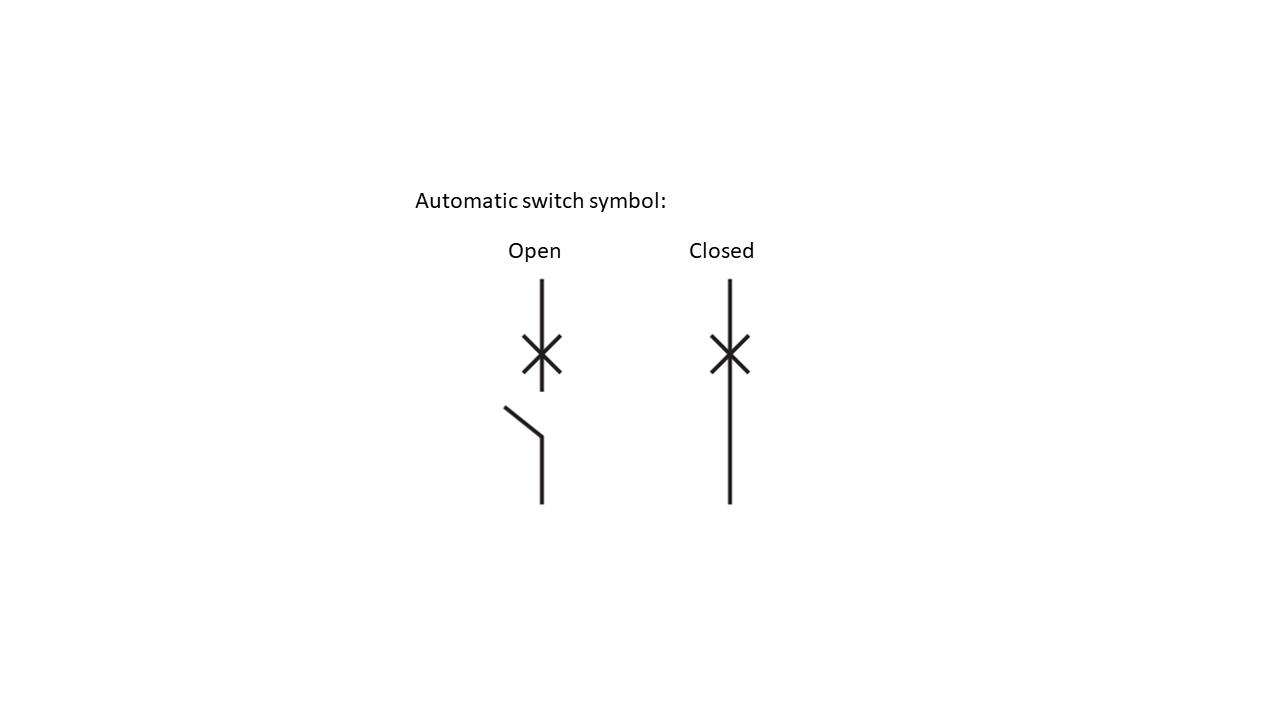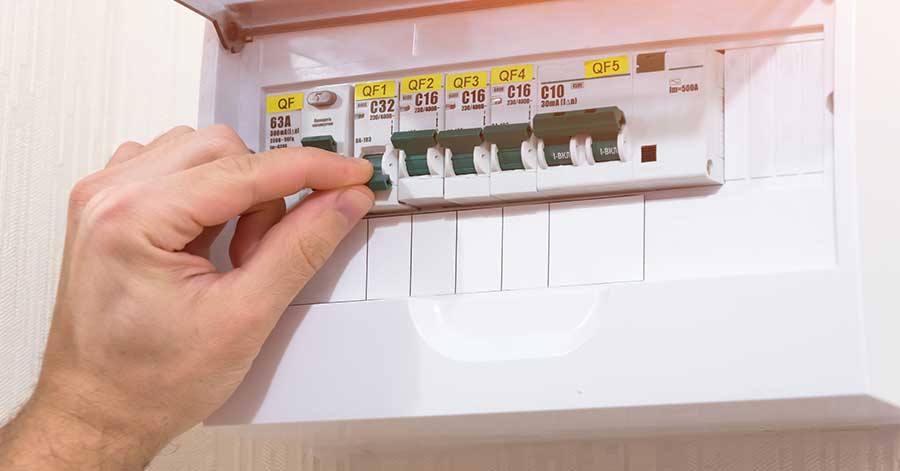Circuit breakers: features and functions
Circuit- breakers are regulatory devices for overcurrent protection: overloads and short circuits. Their function is to act when a fault is detected, that is to say, to cut off the electricity supply of the installation and allow its restoration when the anomaly has been solved.
According to the standards, the automatic circuit breaker is defined as the “mechanical connection device capable of establishing, supporting and interrupting currents in the normal conditions of the circuit, as well as of establishing, supporting for a certain time and interrupting currents in specified abnormal conditions of the circuit such as short- circuit “.
The symbol of a circuit breaker is as per IEC 60617-7.
Classifications of circuit breakers
It is possible to classify the circuit- breakers considering multiple criteria. One of them is its use function:
• Power circuit-breakers are those that are installed in the connection of an electrical panel from a transformer, a generator, etc. They must be coordinated with the distribution and power circuit- breakers to guarantee the selectivity of protections.
• Distribution circuit- breakers. They protect the conductors that connect the distribution panel with another point of the installation.
• Consumer circuit- breakers. In this case, the protection is direct, since it is located as close as possible to the load.
A second criterion is the type of use:
• Industrial use. It must meet the IEC 60947-1 and the 60947-2 standards, or another equivalent
• Domestic use. It must comply with standard 60898 or an equivalent standard.
It is also possible to classify the circuit breakers according to their type of construction:
• Miniature circuit- breakers. Commonly called MCB, they are usually DIN rail mounted, and are typically used for final consumption.
• Circuit- breakers. They are more robust than miniature circuit- breakers, they are used for currents up to around 1000 A.
• Air circuit- breakers. Its use applies to the highest currents, up to around 6300 A.
What are the basic parameters for the selection of the circuit breakers?
In order to calculate and select a circuit breaker, the following basic parameters must be taken into account.
• Rated operating voltage (Ue). It is the voltage at which the circuit- breakers operates in the conditions of the installation without disturbance. It is common that the circuit- breakers have different rated voltage ranges, with different behaviors between them, as well as voltage values in case of disturbances in the installation.
• Rated current (In). It is the maximum current value that can indefinitely circulate by a circuit breaker, without exceeding the admissible temperature values of the current carrying components.
• Adjustment of the thermal trip current (Ith). It is the current above which the circuit breaker will trip in case of overload.
• Adjustment of the magnetic trip current (Im). It is the current above which the circuit breaker will trip in the event of a short circuit. Sometimes this current is defined according to the type of tripping curve.
• The breaking capacity is the value of the expected short-circuit current that a switching device is capable of interrupting under a given voltage. The correct choice of a circuit-breaker has to be made according to the values defined in the IEC 60947-2: Icu (ultimate breaking capacity) and Ics (service breaking capacity). This value must be greater than the maximum short-circuit current expected at the point of installation. It may be lower if an upstream guarantees adequate breaking capacity through manufacturer cascading tables.
elec calc™
elec calc™ has an extensive library of manufacturer’ s circuit- breaker catalogs. The software automatically sizes the circuit- breakers according to the electrical installation and its regulations. It also allows obtaining a bill of material of the circuit- breakers. The software for the sizing and calculation of electrical installations also allows carrying out selectivity studies and taking into account limitation and cascading.
Do you want to know more?
Attend an e-demo to learn more about elec calc™






